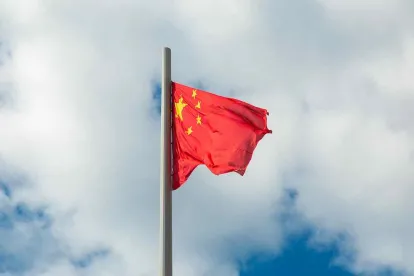On June 21, 2021, the Shenzhen Administration for Market Regulation (Shenzhen AMR) issued the first-ever administrative injunction against the alleged infringement of a design patent. The decision was based on a set of local IP regulations implemented in 2019 to increase protection of intellectual property (IP) rights associated with the booming local innovation in key new technologies. The trend set by the Shenzhen AMR may now expand to local administrative enforcers in other cities and provinces and could revolutionize the way certain IP rights, including design, patent and copyright, have been so far enforced.
The Issue
While trademarks in China can be effectively protected against infringers and counterfeiters through quick and unannounced administrative raids, often taking place just a few hours after filing a complaint, such raids are not available for designs and copyright infringements. Instead, the fastest available response to a design or copyright infringement is an interim injunction by a People’s Court or the initiation of adversarial administrative enforcement litigation. Unlike trademark administrative raids, court injunctions require the filing of a civil lawsuit that can last to up to 18 months, and are subject to strict requirements and a high burden of proof.
Although the recent amendment to the copyright law has made “raid” actions available to copyright owners, it limits them to cases involving a “public interest,” thus limiting the scope and availability of this enforcement tool. The problem, therefore, remains: Current remedies for design and copyright infringements pass mostly through civil courts and are neither cheap nor quick.
The Shenzhen ASM Experiment
In this context, help has not come from above, but rather from local authorities in high-tech or booming economic regions. Some local authorities, compelled by the push provided by the ideological framework of establishing an IP system with Chinese characteristics, and to implement the goals of the 14th Five Years Plan, have taken some initiatives that seem to be providing the possibility of a cheap, quick and effective administrative protection of designs and copyrights through a light version of the traditional court injunction system.
The forerunner of a very bold experiment is the Shenzhen AMR. In the middle of 2019, unnoticed by most observers, this administration adopted and implemented the Regulations of Shenzhen Special Economic Zone on Protection of Intellectual Property Rights. Article 28 of these Regulations provides that:
“Upon receipt of a complaint about an intellectual property rights infringement from a right holder or an interested party, the Municipal Competent Department or other administrative departments may, if there is evidence to prove the existence of infringement facts, first issue an injunction ordering the alleged infringer to cease the alleged infringement immediately and deal with the case in accordance with law. Prior to the issuance of an injunction, the right holder or interested party may be required to provide an appropriate guarantee. If, after investigation, the infringement is not established, the injunction shall be lifted without delay.”
Also, Article 29 of the same Regulations extends the provision to injunctions on e-commerce platforms. These regulations were followed by the “Notice Concerning Regulation on the Adoption of Intellectual Property Administrative Injunction” providing clarifications about the administrative injunctions, including the following provisions:
-
The duration of the injunction typically is not exceed 4 months, although extensions can be granted
-
If the respondent suffers damages due to applicant’s wrongful injunction, liquidation of damages is to be mediated, and if the mediation fails, the respondent can file civil litigation
-
Refusing to comply with the injunction may lead to heavy fines and even loss of business license
-
The alleged infringer may apply for administrative reconsideration or file an administrative lawsuit against the injunction
-
The appeal does not suspend the execution of the injunction
It is remarkable that, unlike civil court injunctions, the Shenzhen Regulations do not require the right holder to give proof of an “irreparable or immediate damage.” The applicant can therefore obtain the injunction by proving the fact of the infringement only. Two years after the implementation of these rules the Shenzhen AMR finally issued its first decision based on these Regulations.
The First Case in Shenzhen
On June 24, 2021, the Shenzhen AMR issued its first injunction under the above described scheme. A foreign individual filed a complaint with one of the local offices of the Shenzhen AMR claiming that a local Chinese company was selling and offering for sale a chair copying its registered design patent through the Alibaba platform, 1688.com. The case review and investigations from the administrative authority were very quick and within 24 hours an injunction was issued. The decision ordered the infringer to immediately stop selling the bath chair in question and take down the listings on the e-commerce platform. No evidence of irreparable damage was requested from the right holder, making the procedure much simpler and faster than the alternatives, and very effective.
Others Are Following This Example, But…
The Shenzhen “experiment” seems to have attracted the attention of other Chinese cities and provinces. Jiangsu province and the city of Tianjin are studying the Shenzhen AMR injunction system, and something similar is about to be implemented by the Hainan Free Trade Port and the Liaoning Province. Under their respective regulations, the holders of IP rights (including design and copyright) may enjoy this kind of administrative injunctions.
The Hainan and Liaoning administrative injunctions do, however, differ from those of Shenzhen in relation to an extremely critical point. While Shenzhen Regulations only require the right holder to submit evidence of the infringing facts and pay a guarantee, the Hainan and Liaoning provisions also require evidence that proves an “irreparable damage” to the legitimate rights and interests of the IP owner if action is not promptly taken. This addition aligns the requirements for an administrative injunction to those of a classical court’s preliminary injunction. This additional requirement heightens the burden of proof of the right holders and reduces their ability to obtain such injunctions, when compared to the slimmer Shenzhen AMR rules.
It will be interesting to see how the Hainan and Liaoning authorities will apply such a requirement, including how far high or low they will set the threshold to prove “irreparable damage.” Will it be a mere formality, so that in practice injunctions will work like in Shenzhen? Or will it be more like a court injunction? We will need to see the first cases to make such a determination.
Conclusions
Whether the “light” injunction system set up by the Shenzhen AMR Regulation will be implemented in other provinces in the coming year or so remains to be seen. A more conservative approach, such as that of Hainan and Liaoning provinces, may be the standard setter. Whether the more stringent systems requiring proof of “irreparable damage” will be implemented in a looser or stricter manner compared to the identical provisions in the civil procedure also remains to be seen.
Regardless, the Shenzhen version of an injunction is a revolutionary reform, especially if consistently applied as it was in its very first decision. If so applied, design patents and copyright owners would have a very quick, effective and cheaper tool to enforce their rights, and would not need to endure the lengthier and more expensive civil or administrative proceedings — a potentially prohibitive burden, especially against minor forms of infringement online. Such a reform would provide holders of design rights and copyright something comparable to raids for trademark rights, especially against the myriads of small online infringers that could not be possibly stopped through normal litigation tools given the impossible cost.




 />i
/>i

